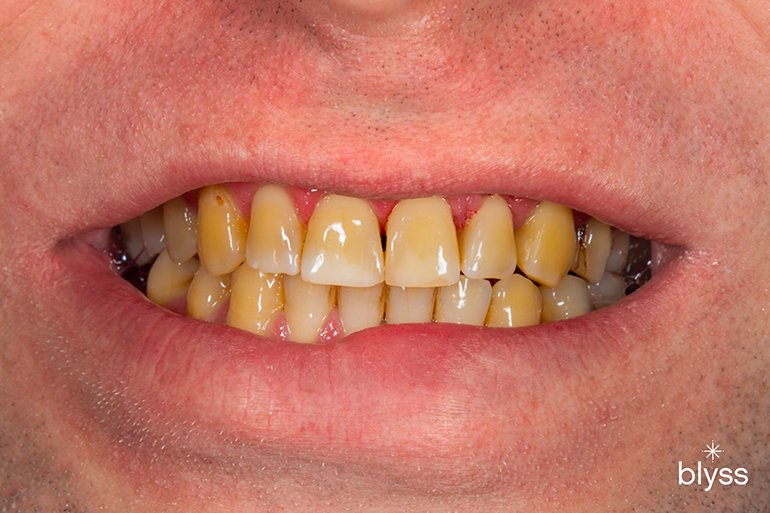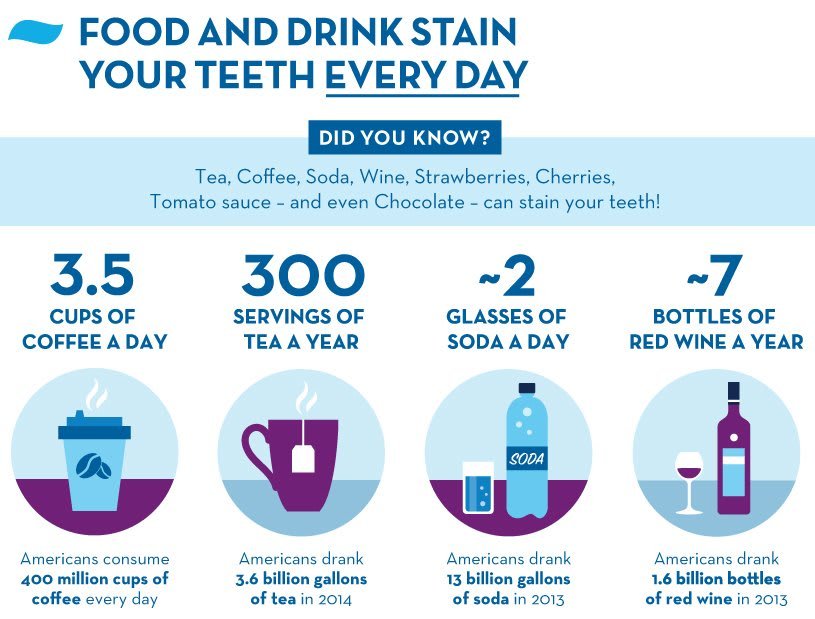If you’re a regular coffee or tea drinker, you might have noticed some discoloration on your teeth. But have you ever wondered what exactly is causing these stains? In this article, we will explore the impact of coffee and tea on teeth staining and provide some tips on how to prevent and treat this common issue. So grab a cup of your favorite beverage and let’s delve into the world of teeth staining!
What Is The Impact Of Coffee And Tea On Teeth Staining?

This image is property of blyssdental.com.
Overview of Coffee and Tea
Coffee and tea are two popular beverages consumed by millions of people around the world. They provide a boost of energy and help many individuals get through their day. However, one concern that often arises is the impact these drinks may have on teeth staining. Both coffee and tea contain pigmented compounds that can potentially discolor teeth over time. In this article, we will explore the causes of teeth staining, the chemical composition of coffee and tea, the direct and indirect staining effects, a comparison between the two beverages, factors that influence staining potential, preventive measures, and whitening techniques and products.
Causes of Teeth Staining
Teeth stains can occur as a result of two main factors: extrinsic and intrinsic staining. Extrinsic staining refers to surface stains that occur on the outer layer of the tooth, known as the enamel. These stains are usually caused by the consumption of pigmented food and beverages, including coffee and tea. Intrinsic staining, on the other hand, occurs within the tooth itself and may be caused by factors such as genetics, age, certain medications, or excessive fluoride intake. While both coffee and tea can contribute to extrinsic staining, it is important to note that their impact may vary depending on several factors, including the chemical composition of the beverages.

This image is property of dralex.nyc.
Chemical Composition of Coffee and Tea
Coffee and tea contain various chemical compounds that contribute to their taste, aroma, and color. The key compounds responsible for teeth staining are known as tannins and chromogens. Tannins are naturally occurring polyphenols found in both coffee and tea, known for their astringent properties. These compounds can bind to the proteins in tooth enamel, leading to discoloration over time. Chromogens, on the other hand, are highly pigmented compounds that can adhere to the tooth surface and cause staining. Both coffee and tea contain these compounds, but in varying amounts.
Direct Staining Effect of Coffee and Tea
The direct staining effect of coffee and tea refers to the immediate discoloration that occurs when these beverages come into contact with teeth. The dark pigments in coffee and tea can easily adhere to the tooth enamel, resulting in noticeable stains. However, it is important to note that the direct staining effect alone may not be the sole cause of long-term teeth discoloration. Other factors, such as the indirect staining effect and individual lifestyle choices, also play a significant role in the overall impact of coffee and tea on teeth staining.

This image is property of i.dailymail.co.uk.
Indirect Staining Effect of Coffee and Tea
The indirect staining effect of coffee and tea relates to the way these beverages can contribute to the breakdown of tooth enamel and the accumulation of plaque. Coffee and tea are both acidic in nature, which means they can erode the enamel over time. As the enamel weakens, it becomes more susceptible to staining. Additionally, the dark pigments in coffee and tea can settle into the microscopic cracks and rough surfaces that may develop on the enamel due to acid erosion. Furthermore, the high sugar content often found in coffee and tea additives, such as creamers and sweeteners, can contribute to plaque formation, which can also lead to teeth staining.
Comparison Between Coffee and Tea Staining
When comparing the staining potential of coffee and tea, it is important to consider both their chemical composition and individual habits of consumption. Coffee contains a higher concentration of chromogens, which are the pigmented compounds responsible for staining. This, combined with its acidic properties, can make coffee a more potent teeth stainer compared to tea. However, tea contains a higher level of tannins, which are also capable of causing discoloration. Ultimately, the severity of staining may vary among individuals, depending on their oral hygiene habits, enamel strength, and frequency of consumption.

This image is property of crest.com.
Factors Influencing Staining Potential
Several factors can influence the staining potential of coffee and tea, including the concentration of pigmented compounds, temperature, duration of exposure to teeth, and personal oral hygiene habits. For example, drinking hot coffee or tea increases the chances of stain absorption as the heat opens up the pores of the tooth enamel, allowing the pigments to penetrate the surface more easily. Similarly, longer exposure to these beverages can lead to more significant staining. Additionally, individuals who practice good oral hygiene, such as regular brushing and flossing, may be better able to prevent or minimize the impact of coffee and tea stains.
Preventive Measures
While it may be difficult to completely avoid teeth staining caused by coffee and tea, there are some preventive measures that can be taken to minimize its impact. One effective step is to consume these beverages in moderation and drink water or rinse the mouth with water immediately afterward. This helps to wash away the pigmented compounds and reduce the amount of time they are in contact with the teeth. It is also recommended to use a straw when drinking coffee or tea, as this can help minimize direct contact with tooth surfaces. Brushing and flossing regularly, along with visiting the dentist for professional cleanings, are also essential for maintaining good oral health and reducing the chances of staining.

This image is property of riverstonefamilydental.com.
Whitening Techniques and Products
For individuals who are already experiencing teeth staining from coffee and tea or want to prevent discoloration, there are various whitening techniques and products available. These include over-the-counter whitening toothpaste, mouthwashes, strips, and trays, as well as professional treatments provided by dentists. Whitening toothpaste and mouthwashes typically contain mild abrasives or chemical agents that help remove surface stains. Whitening strips and trays often contain a peroxide-based gel that can penetrate the enamel and remove both extrinsic and intrinsic stains. Professional treatments, such as laser teeth whitening or professional-grade bleaching agents, can provide more noticeable results but may require multiple sessions and higher costs.
Conclusion
Coffee and tea can potentially cause teeth staining due to their chemical composition and staining effects. The tannins and chromogens found in these beverages have the ability to adhere to tooth enamel, leading to discoloration over time. However, the impact of coffee and tea on teeth staining varies among individuals and depends on several factors such as the concentration of pigmented compounds, personal habits of consumption, oral hygiene practices, and preventive measures taken. By understanding the causes and effects of teeth staining, individuals can make informed choices and take necessary steps to maintain a bright and healthy smile. Remember to consume coffee and tea in moderation, practice good oral hygiene, and consider whitening techniques and products as needed to minimize the impact of staining and maintain a confident smile.